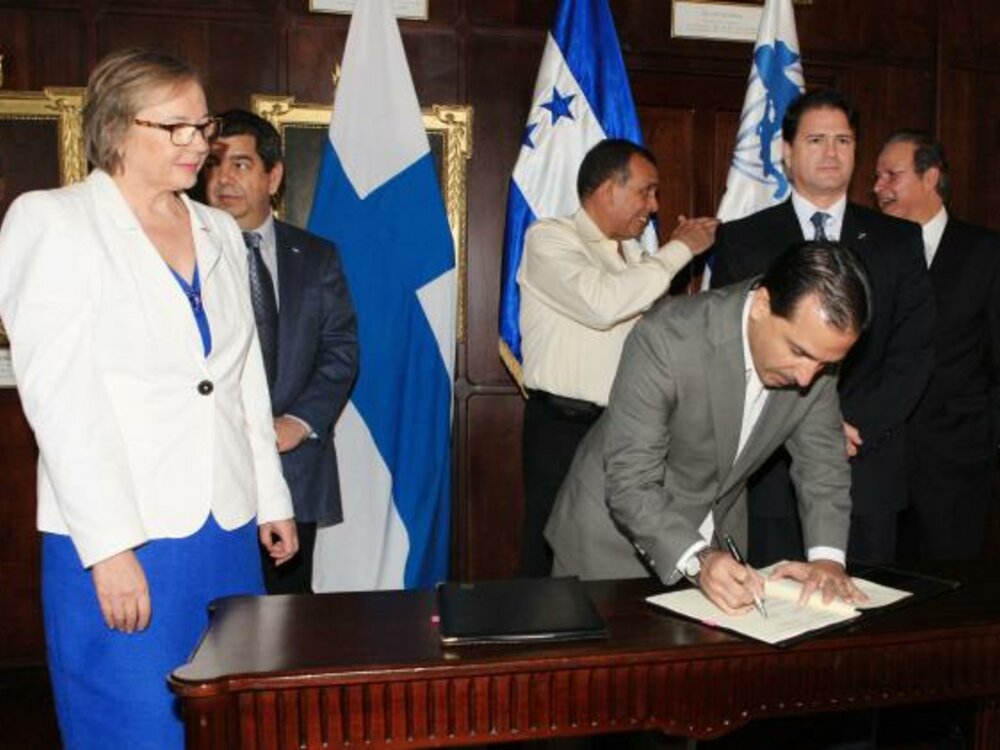CABEI and Honduras sign US$29 million loan to strengthen social electrification

The loan, which includes non-reimbursable cooperation and concessional resources provided by the Finnish government, seeks to connect nearly 45,365 new consumers to the national grid and install 7,627 street lights in beneficiary communities.
In order to support a new stage of the Honduran national "Social Electrification Program," the Central American Bank for Economic Integration (CABEI) and the Honduran government signed a concessional loan contract totaling US$29 million with financial support from the government of Finland.
An Agreement for Cooperation on the Honduran Social Electrification Project was also signed by representatives of the Finnish Government, the Honduran Government and CABEI. In the framework of the agreement, the Finnish contribution will total US$20.8 million, consisting of US$14.9 million in concessional resources as stipulated in the loan agreement signed between CABEI and Honduras and non-reimbursable cooperation of US$5.9 million.
The loan agreement was signed by CABEI Executive Vice President Mr. Alejandro Rodríguez Zamora and Honduran Minister of Finance Mr. Wilfredo Cerrato. Honduran President Mr. Porfirio Lobo Sosa was present as an honor witness.
The Cooperation Agreement with Finland was signed by Ms. Eeva-Liisa Myllymäki, interim Chargé d'Affaires of the Finnish Embassy in Managua, CABEI Executive Vice President Mr. Alejandro Rodríguez Zamora and Honduran Minister of Finance Mr Wilfredo Cerrato.
The new stage of the Social Electrification Program involves the acquisition of materials, construction, installation and supervision of works for the supply of electricity to 744 communities. This will permit the connection of approximately 45,365 new consumers to the national grid and the installation of 7,627 street lights in the beneficiary communities.
Currently more than 20% of the Honduran population has no access to electricity. The lack of electricity is considerably greater in rural areas with respect to urban areas, since coverage rates in urban areas was 98% at the end of 2008 compared with 50.3% in rural areas. Thus 49.7% of rural households lack electricity service and are forced to use alternative lighting sources such as candles, pine wood, lanterns or gas lamps.





